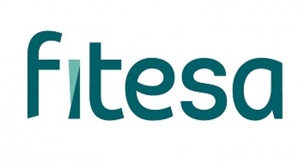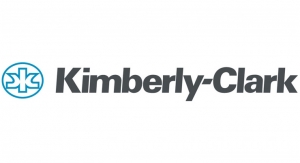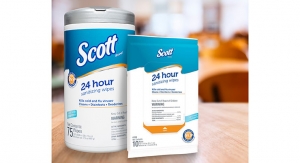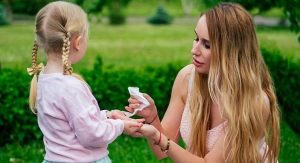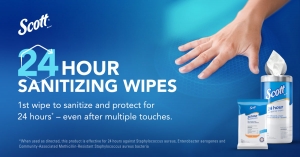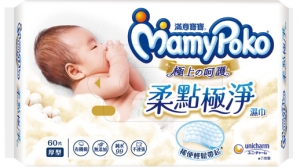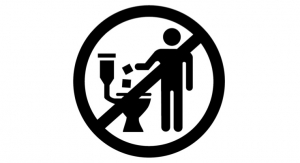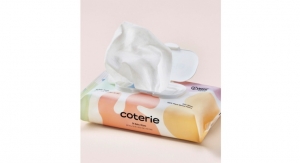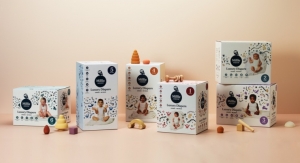Karen McIntyre, editor04.13.16
Despite economic struggles in the region, the Latin American nonwovens industry continues to grow, outpacing the gross domestic product growth of the main economies.

Currently, South American nonwovens production is estimated at 300,000 metric tons, and Mexico and the Caribbean nations are producing more than 100,000 metric tons, but even a slight increase in traditional demand may spark the need for even greater investments. The use of disposable nonwovens as well as more non-traditional nonwovens consumption are both slated to rise, although disposables now represent the majority of the volume in the market. Nonetheless, Latin America now has the third fastest regional demand in the world for nonwovens, following only China and the Middle East.
These prospects have influenced some investment in the region. Fitesa, which is owned by Brazilian petro conglomerate Petropar, announced last year it would add 45,000 tons of spunmelt capacity in Latin America between early 2015 and 2016. Geographically, the investment will cover both the east and west coasts of South America, as well as Central America and Mexico.
Included in this plan is a 20,000-ton line in Sao Paulo, Brazil, an expansion to an existing line in Lima, Peru, and a new spunmelt line in Norrköping, Sweden.
The investment in Brazil includes a new state-of-the-art line in Sao Paolo that meets the growing demand of hygiene manufacturers in South America. It will be housed in a brand new facility in Sao Paolo, Fitesa’s second location in Brazil. “We select sites for investment based on the needs of our customers, the potential growth of the market and consequently that of our customers,” says Raymond Dunleavy, director of sales and marketing, Fitesa. “In South America the penetration of hygiene products is still increasing, despite the recent macroeconomic challenges in the region. Our customers install new converting equipment to meet those needs and we support them with capacity expansions. Brazil’s demand for spunbond/spunmelt accounts for more than 50% of the demand in South America. This plant shows a strong commitment to our customers and represents a growth in supply of about 30% from Fitesa to the South American market.”
In August 2016, Fitesa said it would build a third spunmelt line in San Jose Iturbide, Mexico. The line, which is scheduled to be complete in late 2016, will help serve hygiene markets in North and Central America. “The Mexican market is very integrated with the U.S. and will enable us to localize production of spunbond/spunmelt and establish a solid platform for exports,” Dunleavy says.
Another company with an impressive presence in Latin America is Berry Plastics with its Avintiv division. In 2012, Avintiv, which was then known as PGI, purchased Brazilian spunmelt maker Companhia Providencia in a deal that added about $275 million and 140,000 tons of capacity to its operation. This was the company’s first foray into the Brazilian nonwovens industry but it had already had a strong presence in Latin America with sites in Buenos Aires, Argentina, and Cali, Colombia, in South America as well as a large site in San Luis Potosi, Mexico. Last year, Avintiv announced it would significantly enhance this Mexican site.
This investment includes state-of-the-art printing capabilities with in-line slitting and packaging, is centered on solving the challenge of complicated supply chains and meeting a need for differentiated products for personal care product manufacturers. The result will allow customers to take advantage of a full-service facility producing, printing and slitting materials in a single location, taking advantage of the company’s print expertise while simplifying and reducing risk in the supply chain.
Print applications at the Mexico plant supply a range of personal care market areas including: feminine carepads and liners, adult incontinence bladder control pads and under pads and back sheet, sub-layer and top sheet materials for baby diapers. Other specialty materials planned for the new printer include healthcare products, water resistive and air barriers (house wrap) and roofing products for homebuilding as well as a full range of specialty packaging products.
Wipes in Brazil
One bright spot in the Latin American market is the Brazilian wipes market, which has been rising steadily through the ranks of the leading global disposable hygiene markets, with retail sales growing from $2.7 billion in 2000 to $4.6 billion in 2014. However, the category remains in its infancy with plenty of room for expansion. Currently, personal care wipes account for only 7% of disposable sales, compared to 14% in the U.S., according to Euromonitor. Meanwhile, home care wipes remain a niche category.
In 2014, baby wipes accounted for the lion’s share of the personal wipes retail sales in the country. In fact, Brazil is one of the few developing markets (along with Mexico) with a sizeable baby wipes category. However, at $311 million in retail sales in 2014, the category’s value is still low relative to the money spent on nappies/diapers/pants. In 2014, Brazil’s spending on baby wipes was around 13% of its total spending on nappies/diapers/pants, for example, compared with 26% in the U.S. and 35% in the U.K.
Because baby wipes are complementary to diapers, diaper makers tend to have wipes in their portfolio to build brand loyalty across the baby care regiment. This is expected to increase sales.
Recent launches include Pampers Sensitive, which carries a higher price point at 11 cents per wipe, a widening range of baby wipes by Johnson & Johnson—from those suitable for newborns to wipes with calming aromas and moisturizing properties—and a range of products from higher priced dermatological brand Mustela which carries a range of products to cleanse baby’s face and body as well as products used during the diaper change.
While active product development certainly supports the increased usage of baby wipes, their relatively affordable prices also play a role in wider consumer acceptance.
Falling significantly behind baby wipes in actual value sales, at $21 million in 2014, are cosmetics wipes, which in Brazil consist mainly of facial cleansing wipes. These products typically target women from middle-upper classes with higher disposable incomes while the overall market penetration remains low. In 2014 the category growth less impressive than baby wipes.
The second fastest growth in wipes in the country was achieved by general purpose wipes, with 7% value increase (in U.S.$ constant value terms) in 2014, over 2013. These wipes are marketed and used for hands, face and body, at home or on-the-go. Convenience, coupled with better pricing compared to facial wipes, helped to secure more consumer purchases.
These prospects have influenced some investment in the region. Fitesa, which is owned by Brazilian petro conglomerate Petropar, announced last year it would add 45,000 tons of spunmelt capacity in Latin America between early 2015 and 2016. Geographically, the investment will cover both the east and west coasts of South America, as well as Central America and Mexico.
Included in this plan is a 20,000-ton line in Sao Paulo, Brazil, an expansion to an existing line in Lima, Peru, and a new spunmelt line in Norrköping, Sweden.
The investment in Brazil includes a new state-of-the-art line in Sao Paolo that meets the growing demand of hygiene manufacturers in South America. It will be housed in a brand new facility in Sao Paolo, Fitesa’s second location in Brazil. “We select sites for investment based on the needs of our customers, the potential growth of the market and consequently that of our customers,” says Raymond Dunleavy, director of sales and marketing, Fitesa. “In South America the penetration of hygiene products is still increasing, despite the recent macroeconomic challenges in the region. Our customers install new converting equipment to meet those needs and we support them with capacity expansions. Brazil’s demand for spunbond/spunmelt accounts for more than 50% of the demand in South America. This plant shows a strong commitment to our customers and represents a growth in supply of about 30% from Fitesa to the South American market.”
In August 2016, Fitesa said it would build a third spunmelt line in San Jose Iturbide, Mexico. The line, which is scheduled to be complete in late 2016, will help serve hygiene markets in North and Central America. “The Mexican market is very integrated with the U.S. and will enable us to localize production of spunbond/spunmelt and establish a solid platform for exports,” Dunleavy says.
Another company with an impressive presence in Latin America is Berry Plastics with its Avintiv division. In 2012, Avintiv, which was then known as PGI, purchased Brazilian spunmelt maker Companhia Providencia in a deal that added about $275 million and 140,000 tons of capacity to its operation. This was the company’s first foray into the Brazilian nonwovens industry but it had already had a strong presence in Latin America with sites in Buenos Aires, Argentina, and Cali, Colombia, in South America as well as a large site in San Luis Potosi, Mexico. Last year, Avintiv announced it would significantly enhance this Mexican site.
This investment includes state-of-the-art printing capabilities with in-line slitting and packaging, is centered on solving the challenge of complicated supply chains and meeting a need for differentiated products for personal care product manufacturers. The result will allow customers to take advantage of a full-service facility producing, printing and slitting materials in a single location, taking advantage of the company’s print expertise while simplifying and reducing risk in the supply chain.
Print applications at the Mexico plant supply a range of personal care market areas including: feminine carepads and liners, adult incontinence bladder control pads and under pads and back sheet, sub-layer and top sheet materials for baby diapers. Other specialty materials planned for the new printer include healthcare products, water resistive and air barriers (house wrap) and roofing products for homebuilding as well as a full range of specialty packaging products.
Wipes in Brazil
One bright spot in the Latin American market is the Brazilian wipes market, which has been rising steadily through the ranks of the leading global disposable hygiene markets, with retail sales growing from $2.7 billion in 2000 to $4.6 billion in 2014. However, the category remains in its infancy with plenty of room for expansion. Currently, personal care wipes account for only 7% of disposable sales, compared to 14% in the U.S., according to Euromonitor. Meanwhile, home care wipes remain a niche category.
In 2014, baby wipes accounted for the lion’s share of the personal wipes retail sales in the country. In fact, Brazil is one of the few developing markets (along with Mexico) with a sizeable baby wipes category. However, at $311 million in retail sales in 2014, the category’s value is still low relative to the money spent on nappies/diapers/pants. In 2014, Brazil’s spending on baby wipes was around 13% of its total spending on nappies/diapers/pants, for example, compared with 26% in the U.S. and 35% in the U.K.
Because baby wipes are complementary to diapers, diaper makers tend to have wipes in their portfolio to build brand loyalty across the baby care regiment. This is expected to increase sales.
Recent launches include Pampers Sensitive, which carries a higher price point at 11 cents per wipe, a widening range of baby wipes by Johnson & Johnson—from those suitable for newborns to wipes with calming aromas and moisturizing properties—and a range of products from higher priced dermatological brand Mustela which carries a range of products to cleanse baby’s face and body as well as products used during the diaper change.
While active product development certainly supports the increased usage of baby wipes, their relatively affordable prices also play a role in wider consumer acceptance.
Falling significantly behind baby wipes in actual value sales, at $21 million in 2014, are cosmetics wipes, which in Brazil consist mainly of facial cleansing wipes. These products typically target women from middle-upper classes with higher disposable incomes while the overall market penetration remains low. In 2014 the category growth less impressive than baby wipes.
The second fastest growth in wipes in the country was achieved by general purpose wipes, with 7% value increase (in U.S.$ constant value terms) in 2014, over 2013. These wipes are marketed and used for hands, face and body, at home or on-the-go. Convenience, coupled with better pricing compared to facial wipes, helped to secure more consumer purchases.


